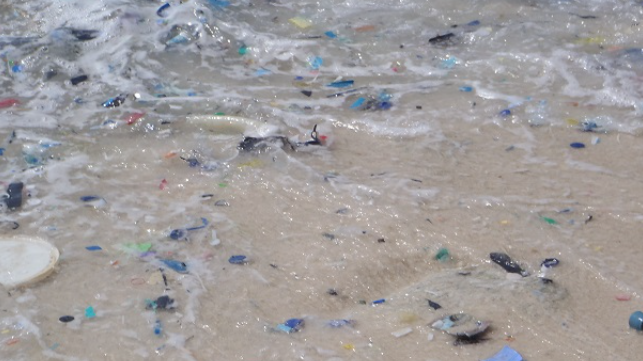EU is Moving Towards Restrictions to Reduce Microplastic Pollution

The European Union is moving closer towards restrictions to reduce or eliminate the use of microplastics one of the pollutants the scientists say is increasing threatening the world’s oceans and environment. The EU’s Committee for Socio-economic Analysis (SEAC) this week announced its actions on a landmark restriction proposal, which would ban the use of microplastics in common products, following a similar opinion by the Committee for Risk Assessment (RAC) in June 2020.
Both committees concluded that an EU-wide restriction is the most appropriate means to address the risks of billions of small, solid plastic particles polluting our environment. They reported that the limitations, which could also be extended to artificial turf used in sports stadiums, would prevent the release of 500,000 tons of microplastics into the environment over 20 years.
Researchers studying the oceans are now estimating that there could be as much as 8 to 14 million tons of plastics on the ocean floor. If that is accurate, it suggests that the plastics have become a far greater problem in the ocean that first estimated. Their figures are show that plastic beneath the surface is up to 35 times more than the estimated weight of plastic pollution on the surface. They also say that plastic is entering the oceans at the rate of 4 to 8 million tons per year. Microplastics are carried into the ocean through runoff and also created as larger plastics breakdown in the water.
“We need to protect our environment from microplastic pollution, and this restriction proposal is the most comprehensive of its kind in the world,” said Bjorn Hansen, Executive Director of the European Chemicals Agency. “We have now concluded our scientific and technical assessment and given our recommendations on how to best address the risks. This will contribute to decision making in the European Commission and the aims of the EU’s Plastics Strategy.”
The proposals the committees are putting forth aim to ban products from the European market that contain intentionally added microplastics if these are released to our environment when the products are used. Examples are cosmetics, cleaning and laundry products, fertilizers, plant protection products and seed coatings.
Other products, such as paints and inks, may also contain microplastics, but their use does not always lead to environmental releases. Under the current proposals, these uses would not be prohibited but would need to be reported to ECHA to ensure that residual releases are monitored and could be controlled in the future. Suppliers would also be obligated to give instructions on how residual releases can be minimized.

that matters most
Get the latest maritime news delivered to your inbox daily.
The total cost of the restriction to European society is estimated to be €10.8 or €19.1 billion depending on how environmental risks from the granular infill material, mainly from shredded car tires, are addressed. The costs consist of the need to reformulate mixtures, replace microplastics with alternative materials and the need for authorities to enforce the restriction.
As a next step, the ECHA will send the opinions of both committees and the restriction proposal to the European Commission, where it will be voted on by the EU Member States in the REACH Committee and scrutinized by the Council and the European Parliament.
